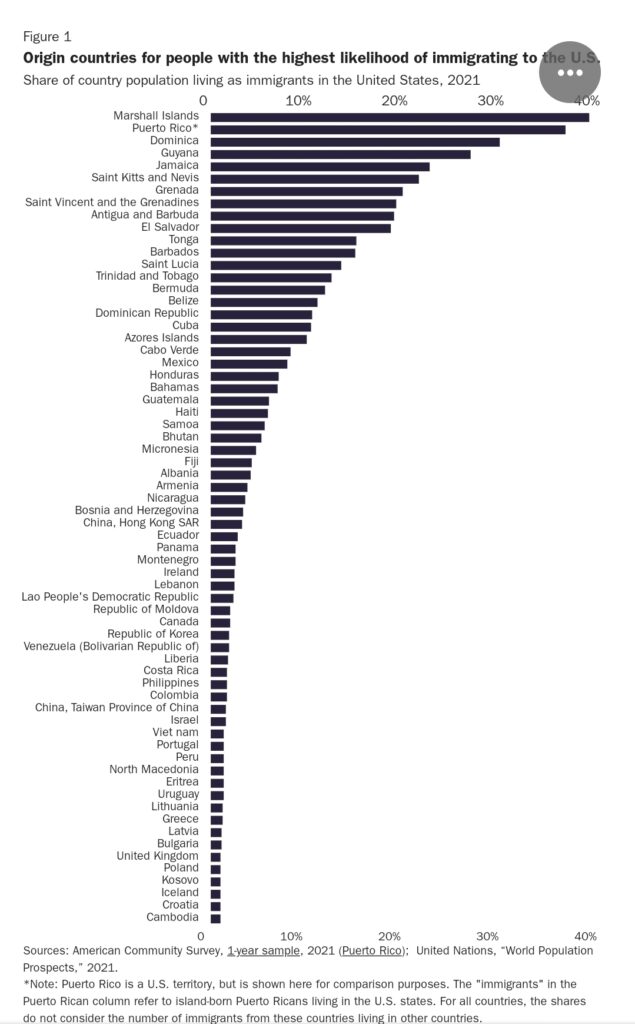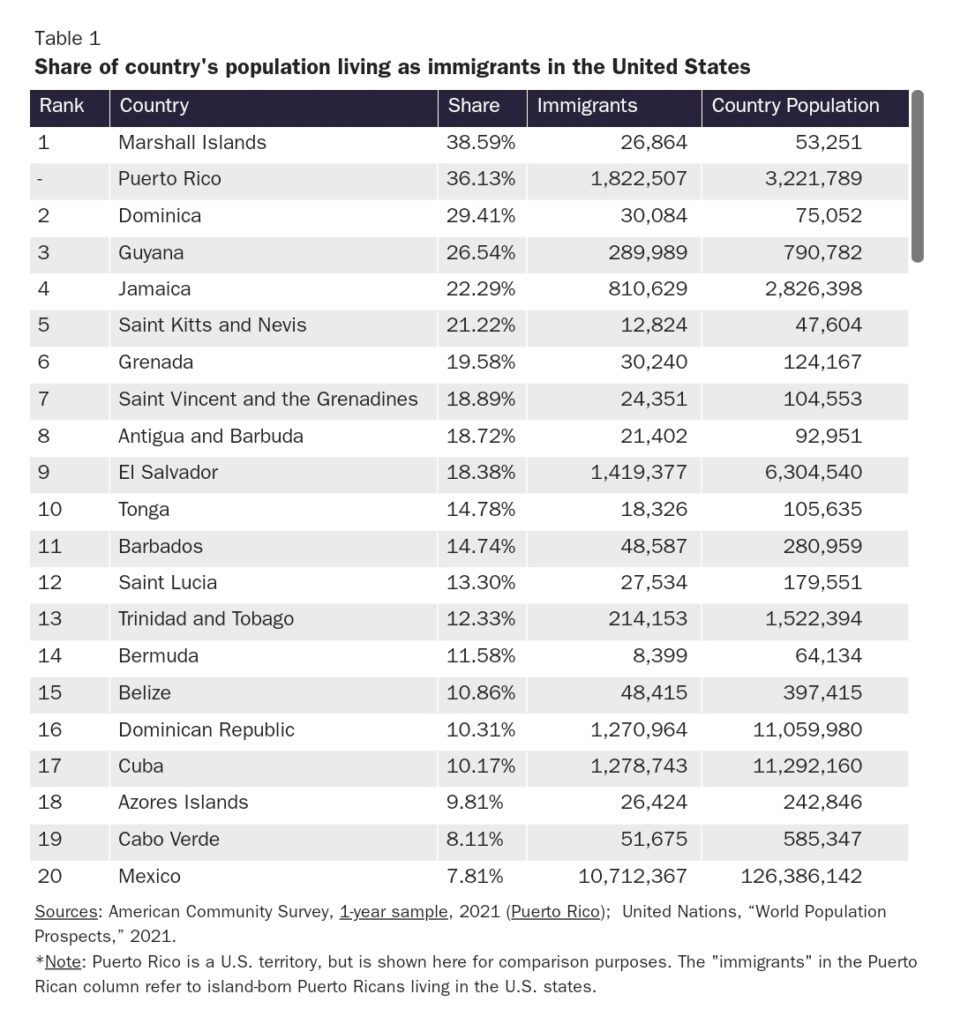St.Kitts and Nevis has the 5th Highest Share of Its population Living in U.S among countries of the world

St.Kitts and Nevis has the 5th Highest Share of Its population Living in U.S among countries of the world. This is according to the latest immigration data from the US Census Bureau’s Community survey of July 1st, 2021. There are currently 12, 824 St.Kitts and Nevis Nationals or Immigrants officially living in the US. The figure would likely be significantly higher if it were to include Nationals who are illegally residing in the US
David Bier reports that the United States is home to immigrants from every country in the world, but people are much more likely to leave some countries than others. The probability of a person from a given country immigrating to the United States can be broadly measured by dividing the number of immigrants in the United States by the country’s population plus the country’s population.
The immigration data come from the U.S. Census Bureau’s American Community Survey as of July 1, 2021 and the country population data come from the United Nations. Immigrants are defined as anyone born abroad who was not a U.S. citizen by birth. The number of immigrants (legal and illegal) from many of these countries has certainly risen since July 1, 2021. However, since the number of immigrants to countries other than the United States are not included, Figure 1 somewhat overstates the likelihood of immigrating to the United States in particular.
Figure 1 shows the origin countries for people with the highest likelihood of immigrating to the United States.
https://e.infogram.com/00848e97-13b8-470a-9bcf-48520ebe5ba9?src=embed&wmode=transparent

- The Marshall Islands tops the list with nearly 39 percent of its population in the United States. It is a former territory of the United States to which the United States still permits nearly free migration.
- Puerto Rico, which is still a U.S. territory with fully free migration between it and the mainland, is shown for comparison purposes. About 36 percent of people born in Puerto Rico (1.8 million) live in the U.S. states.
- Third is Dominica, the small Caribbean island, with 29 percent of its population in the United States.
- Guyana—the South American former‐British colony where the official language is English—is fourth with 26.5 percent of its population living in the United States.
- Jamaica—another Caribbean island which also has English as its official language—is fifth with 22 percent of its population in the United States: 810,629 people.
- Then there is a quartet of smaller other Caribbean Island nations—Saint Kitts and Nevis, Grenada, Saint Vincent and the Grenadines, and Antigua and Barbuda with between 19 and 21 percent of their populations in the United States.
- El Salvador—the Central American country—is the most populous country in the top 10, but 18.4 percent of its population lives in the United States: 1.4 million people.
Other notable countries include the Dominican Republic and Cuba—both of which have seen more than 10 percent of their populations move to the United States. Strikingly, Mexico is by far the largest country in the top 20 with nearly 8 percent of its population living in the United States: 10.7 million people.
Table 1 shows the data for all 147 countries on which the American Community Survey collects information. The most unlikely immigrant in the world is from Indonesia. With a population of nearly 273 million 2021, the country was the country of origin for just 99,509 U.S. immigrants. Despite their 2.1 million immigrants, Chinese are actually quite unlikely to immigrate to the United States with just 0.15 percent of its population living as immigrants in the United States.

The data indicate that many countries have withstood dramatic emigration to the United States. The experience of the Marshall Islands and Puerto Rico may indicate the upper bound for what would happen in countries with close ties to the United States over many decades if legal immigration were not restricted (more than a third immigrating). Surprisingly, however, several countries have sustained an emigration rate exceeding 10 percent of their populations without unrestricted immigration. Countries like Jamaica, El Salvador, the Dominican Republic, and Cuba give an indication of the scale that migration can take in those circumstances.
Leave a comment
You must be logged in to post a comment.